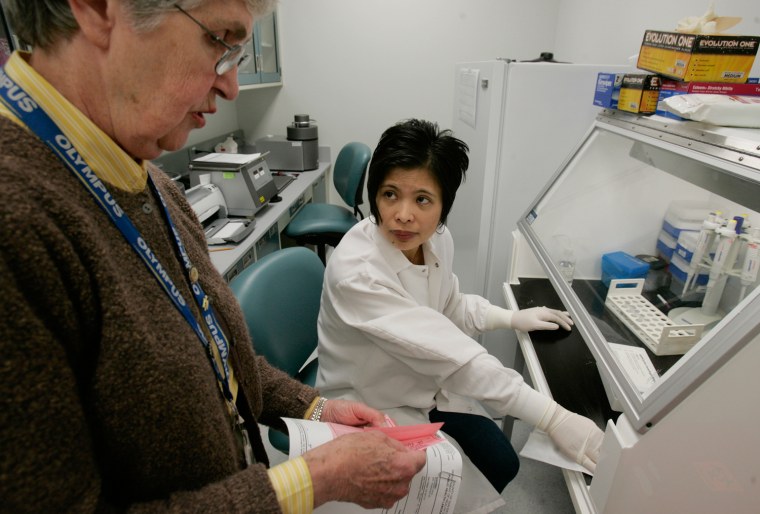Worried patients suffering fever, cough, sniffles and other symptoms crowded emergency departments across the United States over the weekend as word of a widening swine flu outbreak spread, doctors on the frontlines reported.
In New York, where 28 cases of the virus have now been confirmed in school children, 300 patients with flu-like symptoms showed up at multiple sites, said Dr. Andrew Sama, at the New York University School of Medicine.
In Long Island, every fifth or sixth patient in the emergency room asked about swine flu, said Dr. Daniel Murphy of Mercy Medical Center, who worked the day shift Sunday.
“I saw a consistent stream of viral illnesses that might not otherwise have sought medical attention and had specific questions about swine flu,” Murphy wrote in an e-mail.
In Houston, a small spike in patients prompted doctors to implement stricter screening procedures.
“We are really stepping up surveillance,” said Dr. Richard Bradley of the University of Texas Health Science Center.
Doctors created isolation stations in cities across the country to address the demand, although flu experts said the vast majority of cases likely were unrelated respiratory illnesses.
“It’s an expected phenomenon in every outbreak that the worried well are equal to the actual victims,” said Dr. Donald Burke, a flu expert and dean of the University of Pittsburgh’s Graduate School of Public Health.
The number of confirmed swine flu cases in the U.S. has climbed to 48, but that is still a tiny fraction of all influenza, which typically causes an estimated 226,000 hospitalizations and 36,000 deaths in the nation every year.
“Every day in the U.S. there are people who get respiratory illness,” Burke noted. “The probability right now is that any one person who has symptoms of illness does not have the flu and does not have the new swine flu.”
Health experts urged people to be vigilant about flu symptoms — fever, sore throat, lethargy, lack of appetite and coughing. Some people with swine flu have also reported runny nose, sore throat, nausea, vomiting and diarrhea, according to the federal Centers for Disease Control and Prevention.
They urged severely ill patients to contact their doctors, and those with mild symptoms to stay home, but expected the parade of worried well to continue.
“We are going to see a lot of patients who are not going to see anything related to this disease,” Burke said.
